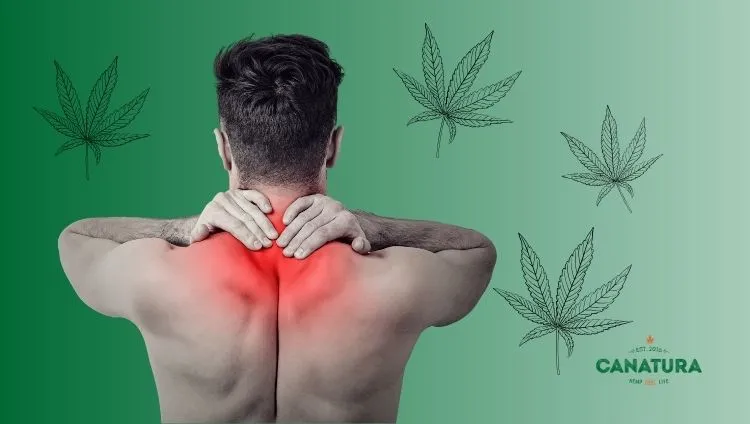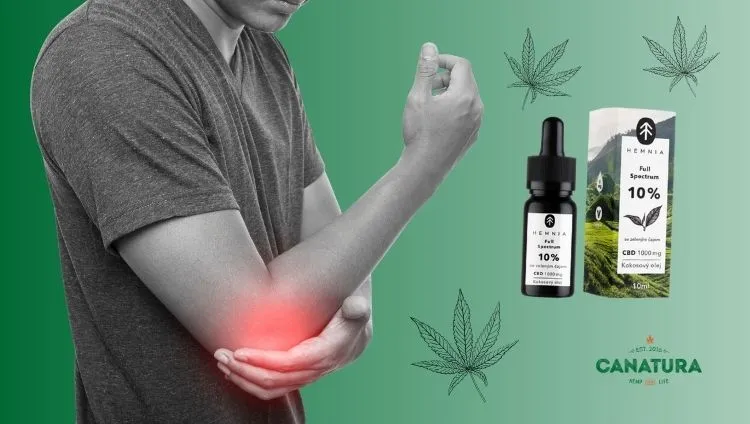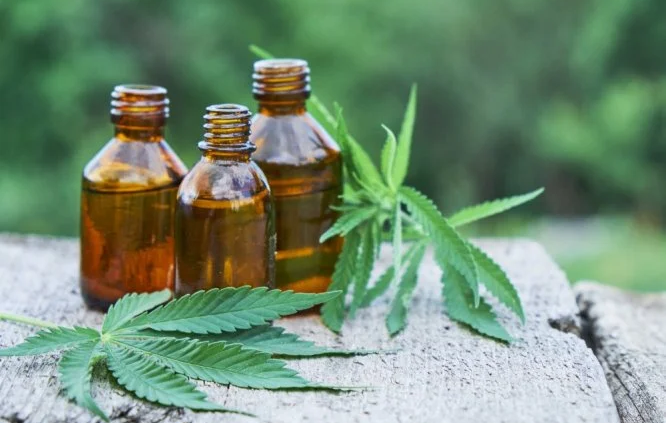Cannabis and pain: How cannabis can relieve pain
- Why is cannabis suitable for pain relief?
- What about non-steroidal anti-inflammatory drugs?
- The history of cannabis: weed and pain management
- The whole plant or THC alone?
- The entourage effect of cannabis
- Benefits of using cannabis strains with high CBD content for pain treatment
- Benefits of using high-THC cannabis strains for pain management
- Unofficial evidence
- CBD oil for pain
- CBD oil for neuropathic pain
- CBD oil for back pain
- Pain and CBD ointment
- Cannabis and CBD dosage for pain
Why is cannabis suitable for pain relief?
Tens of millions of people worldwide suffer from chronic pain, which is why it is necessary to have safe and effective treatments available, something that current pharmaceutical options do not offer.
The two main remedies currently available for pain relief are non-steroidal anti-inflammatory drugs (NSAIDs) and prescription opioids. These painkillers are far from as safe as cannabis. (1 and 2)
Opioid analgesics are among the most addictive drugs available today, and their abuse can be fatal: for example, in the United States alone, sixty people die every day from opioid overdose!

What about non-steroidal anti-inflammatory drugs?
Ibalgin, Modafen, Nurofen, Aspirin, Acylpirin, Nalgesin, Novalgin and many others are found in almost every home medicine cabinet.
While non-steroidal anti-inflammatory drugs are generally effective in reducing pain caused by inflammation, long-term use is accompanied by many dangerous side effects. These include an increased risk of heart attack and stroke.
Medical marijuana is therefore an alternative to over-the-counter and prescription painkillers for good reason. As a pain reliever, cannabis comes with fewer side effects and no risk of overdose. Cannabis and its components have been shown to be safe and effective in managing pain.
Thanks to the legal status of medical marijuana, many patients in our country now have the opportunity to switch from dangerous addictive drugs to a natural and safer alternative. Whether you suffer from chronic neuropathic pain or body aches, or simply short-term muscle pain, headaches or toothaches, cannabis offers you a safer and possibly more effective option than today’s pharmaceuticals.
The history of cannabis: weed and pain management
Throughout history, cannabis has been cultivated and used for medicinal purposes. Evidence suggests that people have been cultivating it for as long as 12,000 years. For many years, this herb was considered miraculous, and for many years after that, it was considered cursed and dangerous to the fabric of society. Yet throughout this diverse history, one thing has remained the same: cannabis has been used as a herbal remedy to treat a wide range of ailments.
The earliest evidence of its medicinal use dates back to 2700 BC, when the Chinese emperor Shen Nung documented its analgesic (pain-relieving) properties. Shen Nung is considered by many to be the father of Chinese medicine, which has been helping to heal people with natural remedies for thousands of years. We have now reached a point where the benefits of using this plant are beginning to return to the forefront of interest among experts and the general public.
However, the crucial question for all patients, growers and doctors is: which type of cannabis is most suitable for pain relief?

The whole plant or THC alone?
When comparing Western medicine with traditional medicine around the world, one of the most striking differences is the Western need to identify a single molecule responsible for treating a disease or symptom. This approach is at odds with the idea of holistic medicine, where something is perceived as a whole for therapeutic use.
The entourage effect in cannabis
The “entourage effect” is a new term coined to describe the idea that all compounds found in the cannabis plant work synergistically and together provide more benefits than the individual compounds alone.
The cannabis plant is one of the greatest current examples of this tug-of-war between Western medicine and traditional medicine. Proponents of Western medicine advocate for isolates, which are simply products containing only tetrahydrocannabinol (THC), only cannabidiol (CBD), or, much less commonly, any of the other individual phytocannabinoids.
THC is the psychoactive cannabinoid responsible for the “high” that comes from using cannabis. CBD is the second most well-known cannabinoid found in cannabis and, like most others, is not psychoactive.
These are the two most studied cannabinoids, and both have been found in numerous published studies to provide pain relief in humans. Although they are the most abundant compounds in the plant, THC and CBD are by no means the only compounds known to have positive effects on human health.
Each cannabis plant contains a unique blend of hundreds of plant compounds, consisting of phytocannabinoids, terpenes and flavonoids. Research suggests that these compounds influence our neurochemistry and, when working together in synergy, may be more effective at relieving pain than any single element on its own.
This supports the idea that it is best to use the whole plant with CBD, THC and a natural blend of other compounds. This harmony between different plant chemicals is known as the entourage effect.
The best-studied compounds found in cannabis that support the idea of the entourage effect are THC and CBD, which have been found to work differently when combined than when separated. The use of these two compounds has been shown to help reduce side effects and increase efficacy, with CBD plus THC showing greater benefits for some conditions than THC alone.
Studies have confirmed that CBD helps balance feelings of being high, anxiety and rapid heartbeat, which are associated with THC use. It has also been found to prolong the half-life of THC, which may help prolong its pain-relieving effects. During clinical trials, this allowed for higher doses of THC to be used to treat pain caused by multiple sclerosis, peripheral neuropathic pain, untreatable cancer, and rheumatoid arthritis. When used together, greater effectiveness was observed in treating these types of pain.
Benefits of using high-CBD cannabis strains for pain management
CBD has been shown to be effective in treating pain both when used alone and in combination with THC. When used alone, CBD is largely best for inflammatory pain, such as pain caused by arthritis or injuries.
In an animal study focusing on arthritis-induced pain, topical application of CBD led to a reduction in inflammation and pain. Another animal study found that CBD helps reduce neuropathic pain by suppressing chronic inflammation.
CBD does not bind directly to the receptors found in the endocannabinoid system, but it does influence the effects of endocannabinoids (cannabinoids that occur naturally in our bodies) as well as CB1 receptor antagonists.
The main mechanism by which CBD is thought to help relieve pain is by reducing inflammation, particularly by blocking inflammatory mediators. It is also thought to enhance glycine receptors, which help regulate pain at the spinal level. This suppresses both neuropathic and inflammatory pain.

Benefits of using high-THC cannabis strains for pain management
THC is clinically used to treat pain, and studies have found that it helps relieve central and neuropathic pain. It is also used to reduce pain in patients with cancer, AIDS and fibromyalgia who have been found to be resistant to other pain management techniques.
THC works by affecting the serotonergic, dopaminergic and glutamatergic systems, which may contribute to pain relief. In addition, THC has been found to act as an anti-inflammatory agent.
Unofficial evidence
While human studies have demonstrated the benefits of THC, CBD and the whole plant in pain relief, much of the evidence comes from patient experience and surveys among patients.
A Canadian survey of people suffering from chronic, non-cancer pain found that 35% of respondents use cannabis for pain relief.
In another study of nearly 3,000 patients using medical cannabis, 97% reported that they were able to reduce their use of opioids while using medical marijuana. In addition, most reported that the relief they experienced with cannabis was comparable to other pain medications.
In general, strains with a high CBD:THC ratio provide the most relief. This is because CBD can help manage the side effects of THC while providing additional anti-inflammatory and analgesic properties.
CBD oil for pain
Even though we live in a country where cannabis is legal for medical use, getting it through doctors and pharmacies is no joke. The solution may be to use CBD oil, which is legal to buy and use. However, even in this case, I recommend consulting a professional.
Most studies look for the benefits of THC and CBD together or the whole plant, but there are also studies investigating the effects of CBD alone. When it comes to studies of isolated CBD, most are preclinical or have been conducted on animals. Studies conducted to date, along with countless user reports, suggest that CBD alone may help relieve pain.
The activation of cannabinoid receptors has been linked to pain inhibition. The exact mechanisms of action are still being investigated, but CBD has been found to increase the levels of endocannabinoids in the body, specifically anandamide. It is likely that this increase in endogenous endocannabinoids could have an impact on pain. Another study suggests that CBD induced suppression of chronic inflammation and neuropathic pain in rats.
Let’s take a look at the limited scientific evidence along with theories regarding the use of CBD for pain.
CBD oil for neuropathic pain
Neuropathic pain is a unique type of pain caused by injured, dysfunctional, or irritated nerves. This pain tends to be chronic and severe, and without a known treatment or cure, each patient must try a variety of strategies to find something that works for them.
The most common causes of neuropathy include diabetes, injury, cancer, infection, alcoholism, and autoimmune disorders. Although clinical studies in humans have confirmed the benefits of THC and CBD, few studies have examined pure CBD. In an animal study, researchers found that oral administration of CBD led to a reduction in neuropathic pain in rats.
CBD oil for back pain
Back pain is one of the most common forms of acute and chronic pain. Acute back pain is usually caused by injury, such as a fall or lifting something heavy. Chronic back pain is pain that lasts longer than three months and is often caused by a ruptured or bulging disc, arthritis, osteoporosis, scoliosis, or neuropathic pain.
Back pain can be partly caused by inflammation, and numerous preclinical and animal studies have found anti-inflammatory effects of CBD. Thanks to its potential to relieve both neuropathic and inflammatory pain, CBD may also help with back pain.
Pain and CBD ointment
When it comes to localised pain, a CBD cream or ointment can be a great option. Thanks to the direct application of CBD to problem areas, concentrated CBD is delivered exactly where it is needed most.
Although there are no human studies on the effectiveness of CBD ointments, there are many animal studies supporting this use. In one study, researchers found that rats with arthritis treated with transdermal CBD experienced a reduction in inflammation and pain-related processes.
Cannabis and CBD dosage for pain
The dosage of cannabis and CBD for pain is highly individual. Studies have found that effectiveness increases with increasing dosage, but only up to a certain point. After that, the effectiveness decreases. To complicate matters further, the effective dosage varies greatly between human studies, depending on the conditions of the study.
For example, in migraines, the effective dose of THC and CBD was found to be 200 mg/day, while 100 mg/day had no beneficial effects. However, doses of Sativex, an oral spray that delivers 2.7 mg of THC and 2.5 mg of CBD per spray, have been shown to be effective in treating central neuropathic pain in multiple sclerosis at doses of approximately 20 to 30 mg of CBD/day + 22-32 mg of THC/day.
No human studies have investigated CBD dosages for pain treatment. Similar to cannabis extract, studies have found that exceeding the optimal dose of CBD may lead to reduced efficacy. In a study investigating the effect of CBD on anxiety, doses of 100 mg and 900 mg were not effective, whereas 300 mg was.
So how do you start when it comes to dosing CBD oil and other hemp products? The following approach has proven effective when dosing hemp oil or other CBD products:
- Select the product you want to use
- Start with the lowest recommended dose
- Divide this dose into 2-3 doses taken throughout the day
- Stay at the same dose for 3 or more days and evaluate the response and effects
- Increase the dose until you find the best one
Products that may help if the patient wants something other than the buds themselves include:
- Solutions or ointments
- Tinctures (bottles with a dropper dispenser containing hemp oils)
- Capsules, tablets or suppositories
- Hemp teas
When looking at these products, you should choose the one that is most suitable and acceptable for you.
In any case, it is advisable (and in some cases even necessary) to consult your doctor and a specialist who can advise you on the most suitable product and procedure.
We wish you good health and, if necessary, successful treatment.
All CBD products for your needs can be found here.
If you need advice on choosing a product, please do not hesitate to contact us.
Author: Elena Moreau
PHOTO: iStock, AI
“All information provided on this website, as well as the information provided on this website, is for educational purposes only. None of the information provided herein is intended to be a substitute for a medical diagnosis, and such information cannot be considered medical advice or recommended treatment. This website does not endorse, approve or advocate the permitted or illegal use of narcotics or psychotropic substances or the commission of other illegal activities. For more information, please see our Disclaimer.”


